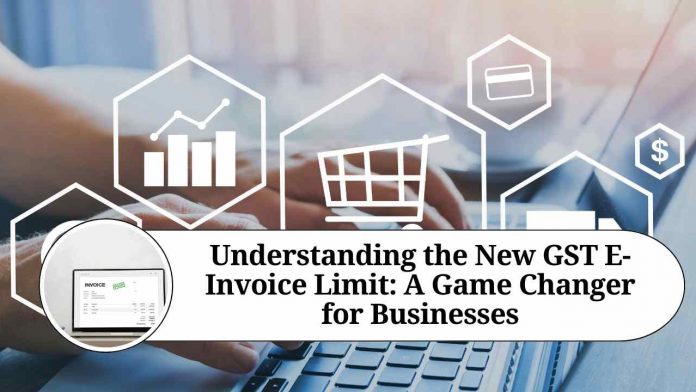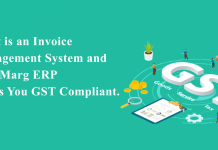Recent Updates on e-Invoicing:
10th May 2023
The CBIC has recently declared the initiation of the 6th phase of e-invoicing, supporting the government’s objective of encouraging a paperless GST system. This initiative aims to lower compliance expenses for companies and enhance the overall efficiency of the GST system. Effective from August 1st, 2023, businesses that have maintained an annual turnover of ?5 crore or above since the fiscal year 2017-18 will be obligated to generate e-invoices.
Introduction
The Goods and Services Tax (GST) system was introduced in India to streamline taxation and ensure transparency in business transactions. Over the years, the government has taken several initiatives to enhance the effectiveness of the GST framework. One such notable development is the introduction of the GST e-invoice system. In this blog post, we will delve into the details of the new GST e-invoice limit and its significance for businesses.
What is the GST E-Invoice System?
The GST e-invoice system is an electronic invoicing mechanism introduced by the Government of India to facilitate the generation and authentication of invoices electronically. It aims to eliminate manual intervention, reduce errors, and enhance tax compliance.
Understanding the E-Invoice Limit:
The GST e-invoice system initially had a threshold limit of Rs. 100 crore (1 billion) in terms of annual turnover for businesses to generate e-invoices. However, to broaden the scope of e-invoicing, the government has recently made a significant change to the e-invoice limit.
Revised E-Invoice Limit:
As of [current date], the revised e-invoice limit stands at Rs. 50 crore (500 million) in terms of annual turnover. This means that businesses with an annual turnover exceeding Rs. 50 crore are now required to generate e-invoices for their transactions.
Benefits of the Revised E-Invoice Limit:
a) Enhanced Compliance: By reducing the e-invoice threshold, the government aims to bring a larger number of businesses within the ambit of e-invoicing. This move will help enhance tax compliance and reduce tax evasion, ultimately strengthening the GST system.
b) Streamlined Processes: The e-invoice system eliminates the need for manual data entry and reduces the chances of errors, thus streamlining the invoicing process for businesses. It also allows for the automatic reconciliation of invoices, making it easier for businesses to manage their financial records.
c) Cost Efficiency: Adopting e-invoicing can lead to significant cost savings for businesses in terms of paper, printing, and storage. Moreover, it reduces the administrative burden associated with physical invoice management.
d) Faster Input Tax Credit (ITC): E-invoices generated through the GST portal are seamlessly integrated with the GSTN (Goods and Services Tax Network), ensuring real-time availability of data. This facilitates quicker and more accurate reconciliation, enabling businesses to claim input tax credit efficiently.
Steps for Generating E-Invoices:
Businesses falling within the revised e-invoice limit can follow these steps to generate e-invoices:
a) Register on the GST portal and obtain the necessary credentials.
b) Select a suitable e-invoice generation software or an enterprise resource planning (ERP) system that supports e-invoicing.
c) Configure the software or ERP system to align with the e-invoice schema provided by the government.
d) Generate e-invoices for all eligible transactions by following the prescribed format and including the required details.
e) Authenticate the e-invoices by uploading them to the designated Invoice Registration Portal (IRP) for validation and obtaining the unique Invoice Reference Number (IRN).
Conclusion
The reduced GST e-invoice limit is a game-changer for businesses, as it brings a larger segment of taxpayers under the purview of e-invoicing. This move not only enhances tax compliance but also streamlines processes, reduces costs, and facilitates faster input tax credit. As businesses adapt to this new requirement, it is crucial to leverage appropriate technology solutions to seamlessly generate and authenticate e-invoices, ensuring compliance with the GST regulations. Embracing the GST e-invoice system will not only benefit businesses but also contribute to the overall growth and effectiveness of the Indian taxation system.
Read more useful content:
Frequently Asked Questions (FAQs)
Q1: What is the GST e-invoice limit?
A1: The GST e-invoice limit refers to the annual turnover threshold set by the government, above which businesses are required to generate e-invoices for their transactions. It indicates the point at which businesses need to adopt the e-invoice system for invoicing purposes.
Q2: What is the revised GST e-invoice limit?
A2: As of [current date], the revised GST e-invoice limit is Rs. 50 crore (500 million) in terms of annual turnover. Businesses with an annual turnover exceeding this threshold are now required to generate e-invoices.
Q3: Why was the GST e-invoice limit revised?
A3: The government revised the GST e-invoice limit to broaden the scope of e-invoicing and bring a larger number of businesses under its purview. By reducing the threshold, the government aims to enhance tax compliance, reduce tax evasion, and strengthen the GST system.
Q4: What are the benefits of the revised e-invoice limit?
A4: The benefits of the revised e-invoice limit include:
Enhanced tax compliance and reduced tax evasion.
Streamlined invoicing processes and reduced errors.
Cost savings in terms of paper, printing, and storage.
Quicker and more accurate reconciliation, leading to faster input tax credit (ITC) claims.
Q5: What steps should businesses follow to generate e-invoices?
A5: Businesses falling within the revised e-invoice limit can follow these steps:
a) Register on the GST portal and obtain the necessary credentials.
b) Select a suitable e-invoice generation software or ERP system.
c) Configure the software or ERP system to align with the e-invoice schema provided by the government.
d) Generate e-invoices for eligible transactions following the prescribed format and including required details.
e) Authenticate the e-invoices by uploading them to the designated Invoice Registration Portal (IRP) for validation and obtaining the unique Invoice Reference Number (IRN).
Q6: Is e-invoicing mandatory for businesses exceeding the GST e-invoice limit?
A6: Yes, e-invoicing is mandatory for businesses with an annual turnover exceeding the GST e-invoice limit. They are required to generate e-invoices and authenticate them through the designated Invoice Registration Portal (IRP).
Q7: What happens if a business fails to comply with the e-invoice requirement?
A7: Non-compliance with the e-invoice requirement can lead to penalties and legal consequences as prescribed under the GST laws. It is essential for businesses to adhere to the e-invoicing regulations to ensure compliance and avoid any potential penalties.
Q8: Can businesses voluntarily opt for e-invoicing even if they fall below the GST e-invoice limit?
A8: Yes, businesses falling below the GST e-invoice limit can voluntarily opt for e-invoicing if they wish to streamline their invoicing processes and enjoy the benefits associated with e-invoicing. However, it is not mandatory for them to do so.
Q9: Are there any exemptions or exceptions to the GST e-invoice limit?
A9: Currently, there are no specific exemptions or exceptions to the GST e-invoice limit. All businesses with an annual turnover exceeding the prescribed threshold are required to comply with the e-invoicing regulations.
Q10: Where can businesses find more information about the GST e-invoice limit and related guidelines?
A10: Businesses can refer to the official GST portal (www.gst.gov.in) or consult with qualified tax professionals to obtain detailed information about the GST e-invoice limit, guidelines, and any updates or amendments introduced by the government.




















